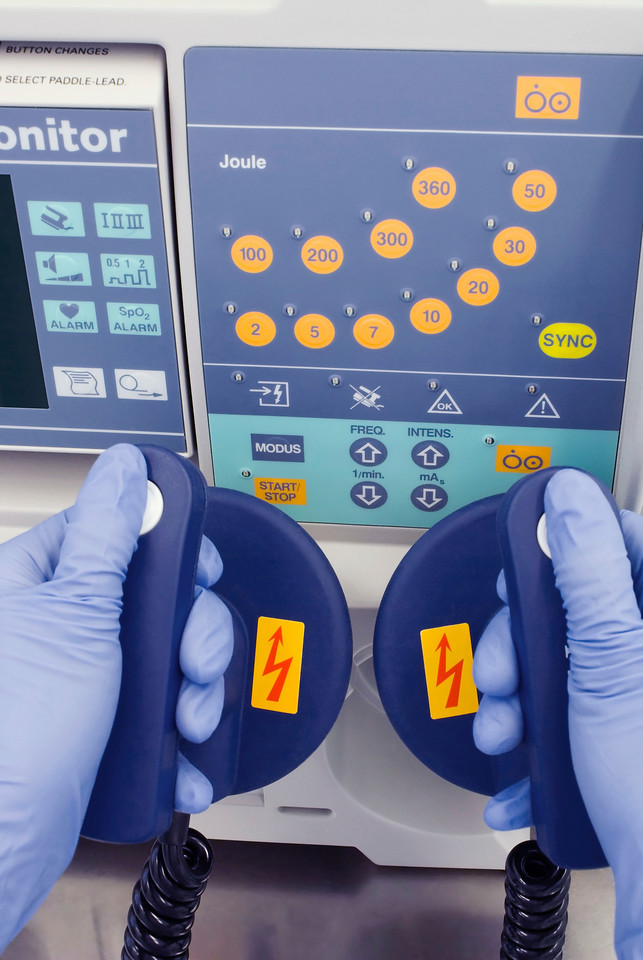Around the world, there are hundreds of thousands of people on transplantation waiting lists because of a critical shortage of organ donors. The impact of even a single donor is immensely significant, potentially saving the lives of seven or more people waiting on these lists.
Advancing Health Scientist and emergency physician at St. Paul’s Hospital, Dr. Brian Grunau, is looking into the possibilities for organ donation after out-of-hospital cardiac arrest (OHCA). As the co-author of a recently published scientific statement from the International Liaison Committee on Resuscitation, Dr. Grunau sheds light on the possibilities and challenges of organ donation after OHCA.
Most out-of-hospital cardiac arrest cases die
Cardiac arrest is when the heart suddenly stops beating. Survival for those with cardiac arrest is dependent on immediate CPR by bystanders and rapid interventions by medical professionals. In BC alone, there are approximately 8,000 cases of OHCAs annually. “Tragically, although the bystanders and the medical system try as hard as possible to save these lives, the vast majority do not survive,” says Dr. Grunau. “This provides OHCA patients an opportunity for organ donation, positively impacting the lives of several other people on Canada’s growing organ recipient waiting lists.”
Different organ donation scenarios
Despite heroic efforts to save someone experiencing cardiac arrest, the damage caused to the brain due to oxygen deprivation may be irreversible, even if emergency interventions succeed in restarting the heart. In this dynamic and fast-paced setting, the time to respectfully and sympathetically discuss organ donation with the family is often limited.

There are two main pathways for organ donation: controlled and uncontrolled donation. “Controlled donation” involves cases with brain death or devastating illness with no hope of recovery, for whom life support is withdrawn with consent. In these scenarios, withdrawal of life support is delayed as the timing of death is under the control of the medical team. This allows time for the family to consider, and if applicable, provide consent for organ donation. “Uncontrolled donation” involves cases for whom the death was unexpected, and resuscitation was unfortunately not successful. For donation to occur, processes must be in place to allow for immediate organ procurement, as after death the organs soon become unviable. This leaves minimal, or often no time, for obtaining consent. For OHCAs who do not survive, uncontrolled organ donation is the only option for the majority, as most are either unable to be resuscitated or die within the first 24 hours despite aggressive medical efforts.
There are a few avenues by which OHCAs may donate organs and/or tissues through uncontrolled donation. Patients who have unfortunately been declared dead after an unsuccessful resuscitation, can then have CPR re-started and be immediately transported to a hospital. Upon hospital arrival, the body will be put on a form of cardiopulmonary bypass—which takes over the role of circulating blood in the body from CPR—after which emergent organ donation surgery takes place. A second option is for the OHCA patient to donate body tissues, such as eyes, skin, bones, tendons, and heart valves. This does not require CPR to be restarted after the declaration of death and allows for a less emergent timeline to procure tissue.
Overlap with Innovative Resuscitation Programs
Dr. Grunau has worked on several projects that evaluate using ECMO (also a form of cardiopulmonary bypass) to improve the survival rates of OHCAs. For OHCAs with unsuccessful resuscitation at the scene, instead of a declaration of death, the current standard of care, the case can be transported to the hospital with ongoing CPR and then placed on ECMO. This is very similar to the process described above for uncontrolled donation. However, the goal is instead patient survival. The patient can be managed on ECMO for several days—only a small proportion may recover, however for these cases it will be a positive outcome. The remaining cases are then potential candidates for organ donation. “Programs for OHCA integrating ECMO-based resuscitation and organ donation have been highly successful in some European centres. The central goal is achieving patient survival, however for non-surviving cases (which describe the majority) ongoing ECMO management allows for enhanced opportunities for organ donation. However, logistical and financial challenges remain a significant hurdle.”
Overcoming barriers around consent
When asked about what the biggest barrier to implementing an OHCA donation program locally is, Dr. Grunau emphasizes that it is procedures to obtain consent. While a minority of non-surviving OHCAs may donate organs through controlled donation procedures, for the majority, uncontrolled donation is the only available pathway, however, this allows little opportunity for informed consent. To address this, countries like France, Belgium, Finland, Norway, Spain, and Singapore have implemented “opt-out” consent policies. This means that all individuals are considered to have consented to organ donation unless they have previously completed documentation to identify their desire not to donate organs. This allows for uncontrolled donation programs to be developed, given that time for consent processes is not required. With additional individuals donating organs, “opt-out” policies allow for further investment in organ donation programs to reduce organ donation waiting lists. In Canada, Nova Scotia adopted an opt-out organ donation program in 2021 through the Human Organ and Tissue Donation Act but it is not yet known how this has impacted their waiting lists.
“The decision to donate organs, for families and individuals, can be emotional and complicated. Societies can collectively decide on whether opt-out policies are acceptable, which would significantly increase the potential opportunities for organ donation after OHCA. However, there remains a need for a robust logistical framework, including defined protocols, infrastructure, and specialized teams.”
Organ donation after OHCA has the potential to offer hope to thousands of people waiting for the generous, life-saving gift that only organ donors can provide. The scientific statement from the International Liaison Committee on Resuscitation highlights the immense potential of this approach. “Ideally the large number of OHCAs in our communities would have the opportunity to donate organs, which would benefit the many individuals waiting for life-saving transplants,” says Dr. Grunau. “We will continue research and advocacy in this field, with the goals of improving medical outcomes for individuals with OHCA and organ failure alike.”
Learn more about organ donation at BC Transplant.
This story originally ran on the Advancing Health website.
Learn more about the calls to action for the rights and interests of First Nations, Métis, and Inuit in response to Nova Scotia’s Human Organ and Tissue Donation Act here.





